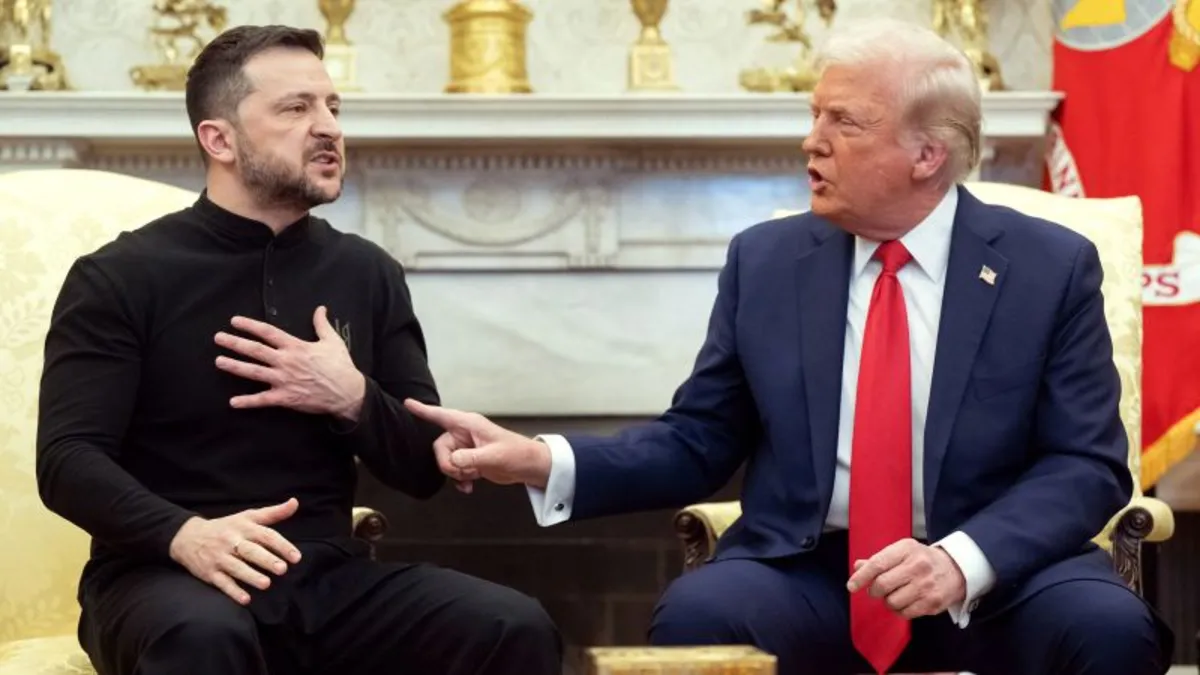
This week, top Trump Cabinet secretaries and national security officials are convening to deliberate on the administration’s future actions concerning Ukraine. This follows a tumultuous meeting last Friday between President Donald Trump and Ukrainian President Volodymyr Zelensky, which ended in significant discord. Key figures in the discussions include Defense Secretary Pete Hegseth, Secretary of State Marco Rubio, and National Security Adviser Mike Waltz. Reports indicate that these officials gathered on Monday to outline strategies for potential peace talks and the future of military aid.
Despite efforts to strategize, there remains a palpable tension between Washington and Kyiv. Three days after the Oval Office confrontation, Trump's criticism of Zelensky has intensified. On Monday, Trump publicly lambasted Zelensky’s comments to the press regarding the prolonged nature of the war, stating, “This is the worst statement that could have been made by Zelenskyy, and America will not put up with it for much longer!” This sentiment echoes Trump's previous assertions that Zelensky may not be the right leader to bring about peace, a position that aligns closely with the Kremlin’s narrative.
Meanwhile, Zelensky’s remarks during a summit of Western leaders in London sparked further outrage from Trump. The leaders from Britain, France, and Canada reiterated their unwavering support for Zelensky, contrasting sharply with the stance from the Trump administration. Reports suggest that these allies are seeking a public apology from Zelensky before they can resume discussions over a mineral deal that was halted post-Oval Office meeting.
Behind the scenes, discussions are ongoing regarding the potential suspension of military assistance to Ukraine. Sources indicate that the Trump administration is weighing options on how to engage both Russia and Ukraine for a ceasefire and an end to long-range strikes on critical infrastructure. Although no definitive decisions have been made regarding halting U.S. assistance, Trump’s comments imply that his administration may reconsider previous commitments made by the Biden administration.
U.S. military officials have expressed skepticism that the Trump administration will seek additional funding for Ukraine from Congress. This funding is crucial for sustaining military equipment transport and training for Ukrainian forces. The Army has been covering these expenses from its own budget, amounting to hundreds of millions of dollars. Without new funding, these vital operations may face significant cutbacks.
Alarm bells are ringing among some Republicans regarding the potential for the Trump administration to withdraw support for Kyiv. Senator Lisa Murkowski from Alaska voiced her concerns over “whispers from the White House” suggesting a withdrawal of U.S. support. “I know foreign policy is not for the faint of heart, but right now, I am sick to my stomach,” she stated, reflecting the anxiety surrounding U.S. foreign policy direction.
Despite the ongoing tensions, Trump administration officials remain committed to finding diplomatic solutions to the conflict. Waltz emphasized the need for Zelensky to publicly express readiness for negotiations, stating, “What we don’t have right now is President Zelensky saying, ‘I am ready to take the steps necessary… to end the fighting.’” Future engagements may include shuttle diplomacy with both Ukrainian and Russian representatives, with plans for continued U.S.-Russia talks in the pipeline.
In conclusion, as the Trump administration navigates the complexities of its relationship with Ukraine, the coming days are critical in determining the future of U.S. support and the potential for peace in the region. The unfolding dynamics will require careful consideration of both diplomatic and military strategies moving forward.